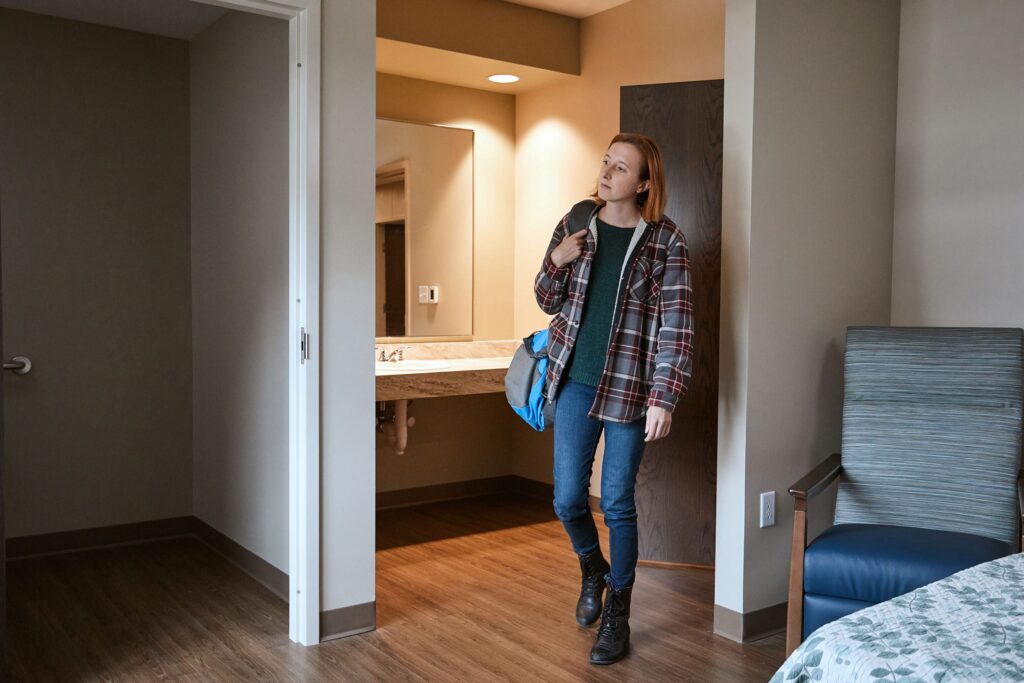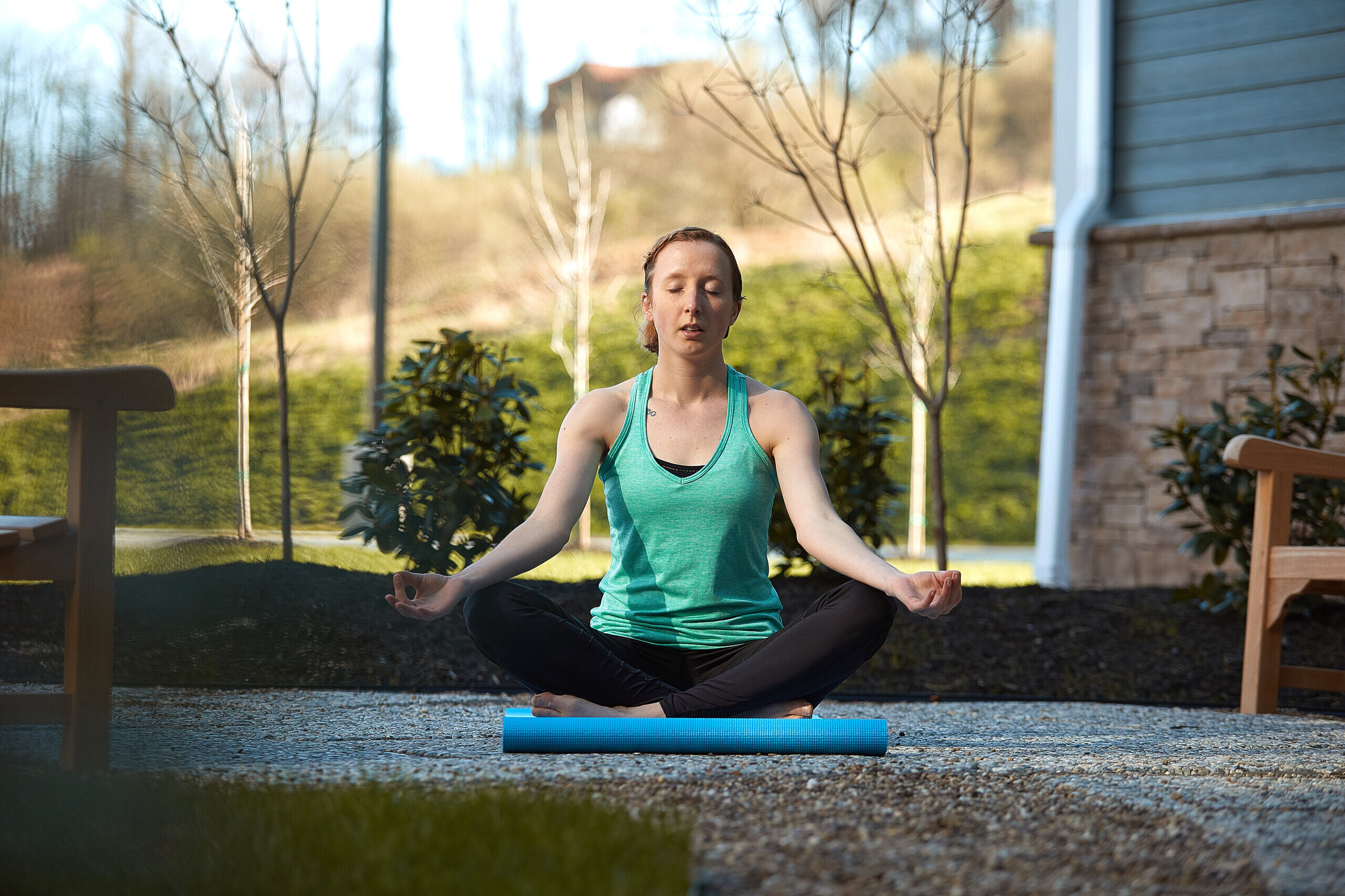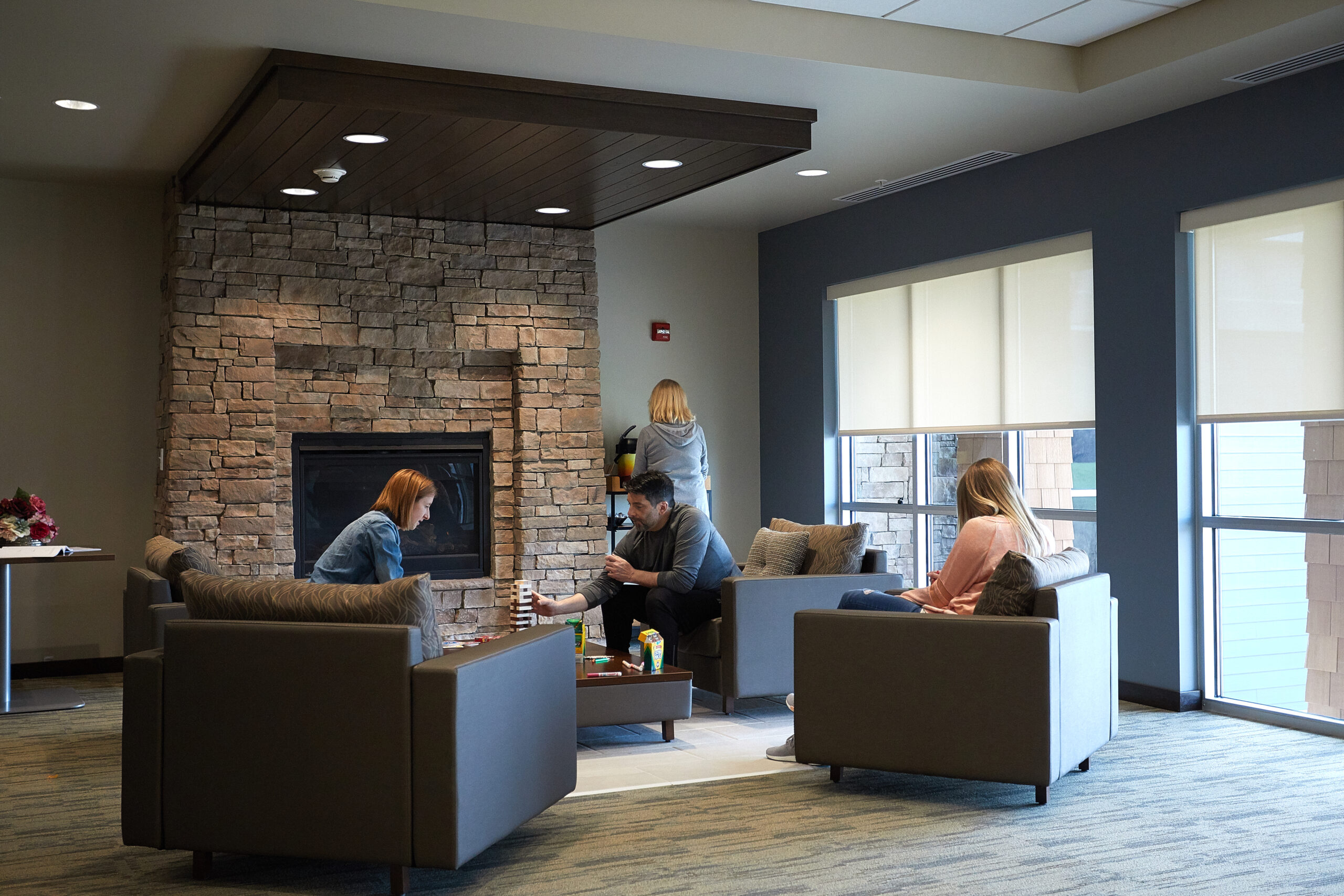WVU MEDICINE CENTER FOR HOPE AND HEALING
The WVU Medicine Center for Hope and Healing supports adults struggling with substance use disorders through medically managed withdrawal stabilization and residential treatment.
The Center for Hope and Healing’s Morgantown facility offers patient-centered care that involves individual and group therapy, as well as medication-assisted treatment. These services are provided in a serene setting by a team committed to providing state-of-the-art treatment, while a caring and supportive environment is maintained.
The Center for Hope and Healing provides a number of beds for detoxification and substance use disorder residential care, up to 28 days. Our patients receive a continuum of care that is ordinarily found at multiple sites by different providers. At the Center, we deliver essential forms of care in centralized locations, led by physicians specializing in addiction medicine and psychiatry.
For information, call (304) 974-4673 (Morgantown) or e-mail [email protected].
Patients: You may self-refer for care by clicking the yellow “Make Patient Referral” button at the top of this page. You may email your completed form* to [email protected], fax it to the fax number listed, or mail to the address at the top of the form.
*To save your completed form, click the Print icon at the top of your screen. A dialog box will appear. Under Select Printer, choose “Adobe PDF” and the location where your file will save. You may then attach that PDF form in an email.






ADMISSIONS
Step One: Contact Us
Complete an online referral form or reach out to our admission team 304-974-4673 for assistance in completing the referral form. Our team is available 24/7 to help facilitate any individual the ability to receive care as soon as possible.
Step Two: Medical Review
Our admissions team will work diligently to assess your needs and determine the appropriate level of care. Should our team have any follow-up questions while reviewing your referral, one of our team members will be in touch with you to get pertinent information.
Step Three: Treatment Plan Recommendation
Once accepted to our program, one of our admissions team members will be in contact with you to confirm a date and time for admissions. At this time- be sure to ask any other questions you may have regarding the program or treatment.
Step Four: Arrive to our facility
Admitting to treatment is a big step. Our team will make sure you feel welcome and at home as soon as you arrive to start your journey to recovery. Our experienced team will be happy to assist you and make your stay a positive experience.
Meet Raven
WHAT TO BRING
Clothing
- 7 weather appropriate outfits (no offensive logos, alcohol or drug-related advertisements or related images)
- No revealing clothing, low cut, holes higher than the thighs
- 7 pair of under garments
- 7 pair of socks
- 1 pair gym shoes
- 1 pair shower shoes
Hygiene products
- Shampoo, conditioner, body wash, alcohol free mouth wash, toothpaste, all non-aerosol
- Toothbrush
- Hairbrush/comb
- Glasses, dentures, hearing aids as applicable
- Makeup and hair styling items
Most hygiene items can be supplied if you forget or run out of them during your stay.
You may also bring
- Home medications or prescriptions (to be dispensed by nursing staff)
- Brand new/unopened packs of cigarettes
- Books/Recovery readings
- Sunglasses
- Hats



WHAT NOT TO BRING
- Aerosol sprays of any kind
- The following hygiene items with alcohol as an ingredient: mouthwash, hairspray, hand sanitizer, roll on deodorant.
- Perfume/cologne
- Illicit drugs or paraphernalia
- Over the counter drugs
- Nicotine products or paraphernalia (Not including cigarettes)
- Electronics of any kind
- Drug, gang, death/torture-themed or offensive material
- Glass or metal items/objects
- Glue or other inhalants
- Stuffed animals
- Bedding/towels
- Hair dye
- Laundry detergent/dryer sheets
- Pornography
- Weapons
- Money/ Credit cards
- Cameras or recording devices
- Weapons
- Food items and drinks (meals, drinks and snacks will be provided)
SERVICES
The comprehensive person-centered treatment program offered at the Center for Hope and Healing includes:
- Detoxification (co-ed)
- 28 Day residential treatment (coed)
- Medication-assisted treatment
- Family support services
- Individualized treatment plans
- Trauma-informed care
- Mindfulness-based practices
- Specialized programming for recent overdose survivors and pregnant women
AMENITIES
- Exercise Room
- Fully Staffed Kitchen
- 24/7 Nursing Staff
- PRSS on site- 7 days a week
- Walking Trails
- Library
- Scenic views
MEDICATED ASSISTED TREATMENT (MAT)
Buprenorphine (Suboxone)
-
- One medication approved for the treatment of opioid dependence is Suboxone®. At the right dose, Suboxone® suppresses cravings for opioids and eliminates withdrawal symptoms. The medication is a combination of two drugs that eliminates the high from opioids and has two mechanisms that protect against abuse of the medication.
-
- Buprenorphine, the active ingredient in Suboxone®, works by strongly binding to opioid receptors in the brain. Buprenorphine attaches to the opioid receptors, activating them partially, enough to suppress withdrawal and cravings, but not enough to cause extreme euphoria.
-
- Even when all available receptors are occupied with buprenorphine, the total opioid effect is relatively low. Therefore, even if the patient decides to misuse opioid drugs after taking buprenorphine, the effects can be blocked, depending on the dosage. The ceiling effect and the blocking ability give buprenorphine a favorable safety profile and help lower the risk of overdose and misuse.
Sublocade
- Sublocade® (buprenorphine extended-release) injection, is a prescribed medicine to treat adults with dependence to opioids who have received an oral transmucosal (used under the tongue or inside the cheek) buprenorphine-containing medicine at a dose that controls withdrawal symptoms for at least 7 days.
- Sublocade® is given by your provider as an injection under the skin (subcutaneous) near your stomach (abdomen). Sublocade® is a liquid injection, given monthly (with at least 26 days between doses. After the injection, Sublocade® changes to a solid, called a depot. The depot may be seen or felt as a small bump under your skin at the injection site on your abdomen for several week
Methadone
-
- Methadone is a medication approved by the Food and Drug Administration (FDA) to treat opioid use disorder (OUD) as a medication-assisted treatment (MAT), as well as for pain management. When taken as prescribed, methadone is safe and effective. Methadone helps individuals achieve and sustain recovery and to reclaim active and meaningful lives. Methadone is one component of a comprehensive treatment plan, which includes counseling and other behavioral health therapies to provide patients with a whole-person approach.
-
- Methadone, a long-acting opioid agonist, reduces opioid craving and withdrawal and blunts or blocks the effects of opioids.
-
- By law, only an Opioid Treatment Program (OTP) can dispense methadone for the treatment of Opioid Use Disorder (OUD). Patients taking methadone to treat OUD must receive the medication under the supervision of a practitioner. After a period of stability (based on progress and proven, consistent compliance with the medication dosage), patients may be allowed to take methadone at home between program visits.
- Must be established with a methadone provider prior to admission.
Vivitrol
-
- Naltrexone and Vivitrol® are used for treatment of alcohol dependence in patients who are able to abstain from drinking alcohol prior to initiation. Patients should not be actively drinking at the time of initial administration.
-
- Naltrexone and Vivitrol® are also used for prevention of relapse to opioid dependence, following opioid detoxification.
-
- Oral naltrexone is a daily pill used for alcohol and opioid dependence; Naltrexone extended-release injection (Vivitrol®) is the monthly injection used for the same purposes.
-
- The administration of oral naltrexone or Vivitrol® is not associated with the development of tolerance or dependence. The medications are opioid blockers (antagonists).
DISCHARGES / AFTERCARE
When it comes time for our guest to leave treatment, an effective aftercare plan is crucial for every individual. Aftercare planning for the individual helps to ensure an easier and effective transition from inpatient treatment to outpatient treatment. We believe, a robust and personalized aftercare plan will help the individual deal and cope with any stress, triggers or cravings once they have left our facility.
What does aftercare planning look like?
Each plan is tailored to the individual. Guests will meet with a member of our case management team to work on any of the following:
- Follow-up Appointments – Psychiatry, individual therapy
- Completing referrals for the next step- Sober living homes or other long term treatment options
- Connecting the guest with resources- AA/NA/ Celebrate Recovery, Peer Supports Specialists
Case Managers
- Faith Thompson
- Michelle Gilchrist
- Ava Morris
- Amanda Caloccia
-
FAQ
How long is the Program at Center for Hope and Healing?
Our residential program is 28 days.
Our detox program is based upon each guests specific needs- Average length of stay for detox is 3-5 days.
Is there any visitation or option for family therapy?
We do not have any type of visitation for our facility. If Family therapy is requested, your therapist will be able to arrange a virtual session.
Am I able to smoke at Center for Hope and Healing?
Yes – While we do permit our guests to smoke cigarettes, the use of other tobacco products are prohibited (i.e. Vapes, snuff/chewing tobacco)
Am I permitted to have my cell-phone or other electronic device?
To protect the confidentiality of all of our guests, we prohibit the use of any electronic device.
Can I items dropped off?
Yes – Guests may have select items dropped off by friends or family. Any item on our prohibited list will be returned or held on to until time of discharge.
Can I have food delivered or brought in?
Any type of outside food is prohibited. This includes any deliveries from friends, family or restaurants.
